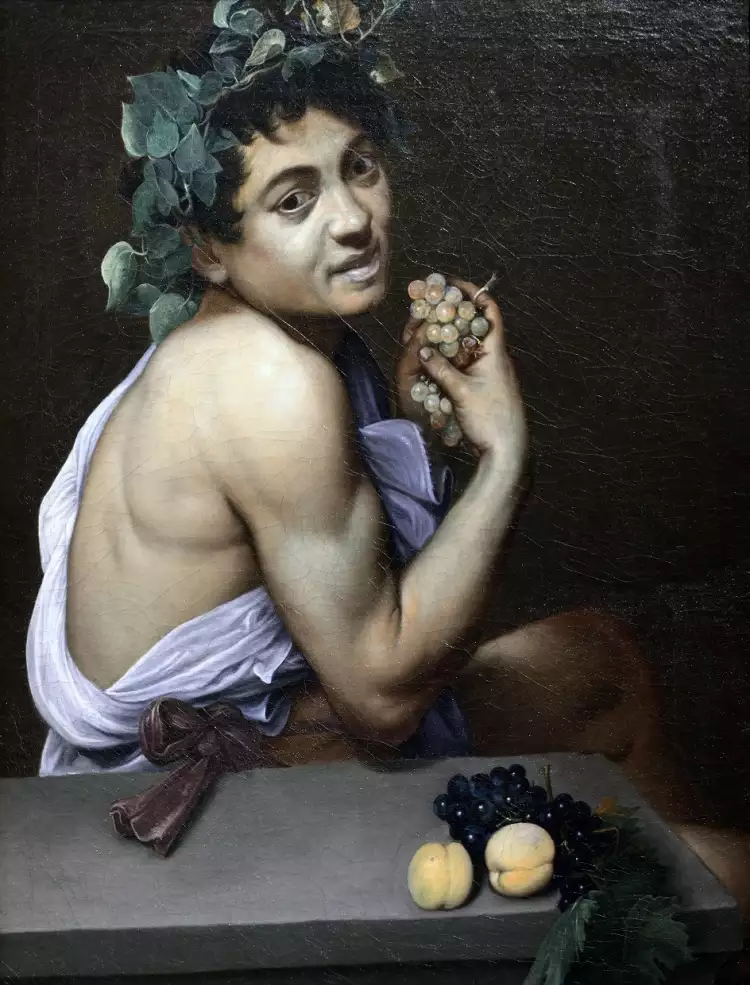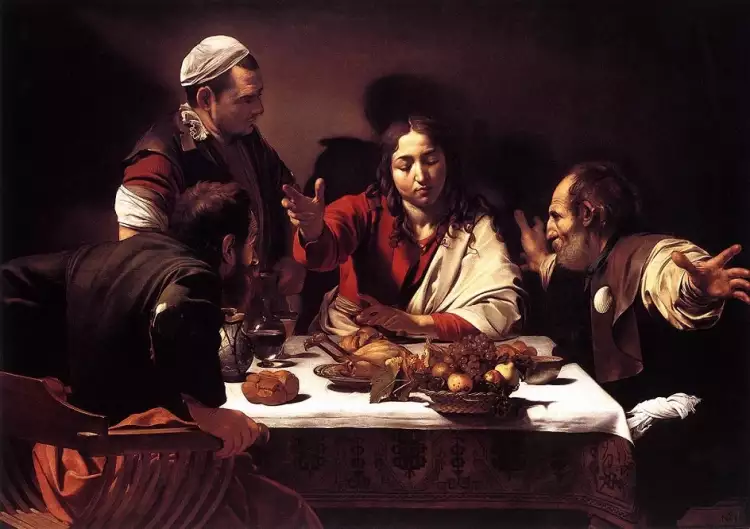
Caravaggio was a brilliant painter, an art innovator, and a thorough rebel
Michelangelo Merisi da Caravaggio (born September 29, 1571 – died July 18, 1610) was a renowned Italian artist of the late 16th and early 17th centuries, an outstanding master of domestic and religious genres, and a major reformer of European Baroque painting. Caravaggio's paintings are characterized by a stark contrast between light and shadow, as well as strong emotional intensity.
 Caravaggio. Ottavio Leoni Portrait of Caravaggio, 1621
Caravaggio. Ottavio Leoni Portrait of Caravaggio, 1621
Caravaggio had a volatile temperament, often provoking scandals and facing serious legal issues for many years. The great master is the author of the first Italian still life and the founder of the realistic direction in European painting of the Baroque era.
Biography of Caravaggio
Caravaggio (real name: Michelangelo Merisi) was born in Milan on September 29, 1571, into the family of an architect. At the age of five, his father died due to a plague epidemic. This tragic event led his mother to leave the capital of the duchy and settle with the children in the small town of Caravaggio. The name of this town later became the famous nickname of the artist.
 Caravaggio. Young Sick Bacchus, 1593
Caravaggio. Young Sick Bacchus, 1593
In 1584, Caravaggio began his painting apprenticeship in the workshop of Simone Peterzano, one of the numerous students of Titian. At that time, Mannerism dominated the art scene in Italy, while the realistic style was just emerging.
 Caravaggio. The Lute Player, 1595
Caravaggio. The Lute Player, 1595
Young Caravaggio managed to combine his studies with scandals and fights. After a brawl, he was even accused of murder, which prompted him to flee to Rome in 1591. During the first two years in the Eternal City, the artist struggled to make ends meet, had no permanent residence, but remained hopeful for a better future.
 Caravaggio. Basket of Fruit, 1596
Caravaggio. Basket of Fruit, 1596
In 1593, Caravaggio was employed in the workshop of Giuseppe Cesari, where he had the opportunity to meet various painters and art patrons. A few months later, Caravaggio's life was almost cut short by a severe illness – malaria. However, his young body overcame the disease, and the recovering artist created his first self-portrait – the painting "Sick Bacchus."
 Caravaggio. Rest on the Flight into Egypt, 1597
Caravaggio. Rest on the Flight into Egypt, 1597
Being a rebel by nature, Caravaggio deliberately challenged the traditional art styles of his time, such as Mannerism and Academism. He began to paint in a realistic genre, depicting ordinary people (musicians, street vendors, boys, and even gypsies).
Despite his stubborn character, the artist gains an influential patron - Cardinal Francesco del Monte. Caravaggio settles in the countryside villa of the patron and leads a well-provided life for the next 6 years.
Creating several innovative paintings on biblical themes brings the artist great fame. He receives a number of commissions from the church and executes them in a groundbreaking manner. Many of his original works are criticized by the clergy, and the painter has to redo his work.
 Caravaggio. The Calling of St Matthew, 1600
Caravaggio. The Calling of St Matthew, 1600
Engaging in painting doesn't prevent Caravaggio from leading a dissolute lifestyle. During one of the brawls, he kills a man and is declared an outlaw. The artist is forced to flee Rome, first to Naples and then to Malta. He works extensively and creates new masterpieces but constantly clashes with people. As a result of another incident, he ends up in prison, from which he soon manages to escape.
 Caravaggio. Supper at Emmaus, 1606
Caravaggio. Supper at Emmaus, 1606
Pursued by Maltese authorities, Caravaggio often moves from one city to another. He visits Messina, Palermo, and Naples, where he miraculously survives an assassination attempt. Influential patrons of Caravaggio plead with the Pope in Rome for the artist's pardon. However, suddenly on July 18, 1610, the painter dies under mysterious circumstances.
 Caravaggio. Madonna di Loreto, 1606
Caravaggio. Madonna di Loreto, 1606
Caravaggio's work had a tremendous influence not only on Italian but also on European painting. In many countries, after the master's death, his followers emerged - the Caravaggisti, and to this day, the genius's paintings adorn the exhibitions of the world's finest museums.
 Caravaggio. The Death of the Virgin, 1606
Caravaggio. The Death of the Virgin, 1606
The Most Famous Paintings of Caravaggio
The list of Caravaggio's most famous paintings includes several dozen worthy works. Nevertheless, the following masterpieces stand out in the artist's creative arsenal:
- "Basket of Fruit" (1596) - the first still life in the history of Italian painting. Even in this genre, the artist managed to create a truly realistic masterpiece.
- "Medusa" (1597) - a unique masterpiece by the great master in the form of a convex shield, an original self-portrait of the artist. The painter had to use a special painting technique to create a three-dimensional image of the famous character from ancient Greek myths.
- "Supper at Emmaus" (1606) - a painting that marked the beginning of the late period of the artist's work. It was in this masterpiece that Caravaggio's famous use of shadow first appeared, which became a starting point for the formation of a new direction in painting - Caravaggism.
- "The Death of the Virgin" (1606) - a work that amazes with its realism. The painter dared to depict the Virgin Mary as an ordinary mortal woman, defying all canons. The masterpiece faced fierce criticism from church authorities.
- "David with the Head of Goliath" (1607) - an astonishing work in which the severed head of Goliath represents a shocking self-portrait of the artist. Caravaggio kept this painting with him in exile until his death.
 Caravaggio. David with the head of Goliath, 1607
Caravaggio. David with the head of Goliath, 1607
Caravaggio's masterpieces continue to mesmerize art enthusiasts today. And the Very Important Lot platform provides a unique opportunity for everyone interested to participate in thematic auctions. Here, you can also buy paintings directly from contemporary artists at affordable prices.

 The Art of Ancient Russia is a unique blend of pagan traditions of Eastern Slavs and Byzantine influence on the local culture
The Art of Ancient Russia is a unique blend of pagan traditions of Eastern Slavs and Byzantine influence on the local culture  The painting "The Bronze Serpent" by Fyodor Bruni is an interpretation of an Old Testament story by a great master
The painting "The Bronze Serpent" by Fyodor Bruni is an interpretation of an Old Testament story by a great master  The painting "Dido building Carthage" by William Turner is the artist's beloved creation, which he wanted to take with him to his grave
The painting "Dido building Carthage" by William Turner is the artist's beloved creation, which he wanted to take with him to his grave  Caravaggism: The Struggle of Light and Darkness
Caravaggism: The Struggle of Light and Darkness  Postmodernism style in interior design - a game without rules
Postmodernism style in interior design - a game without rules  German Porcelain: History of Creation and Development
German Porcelain: History of Creation and Development  The most famous Orthodox icons
The most famous Orthodox icons  Lithography is a type of graphics and a masterpiece of art
Lithography is a type of graphics and a masterpiece of art  Wallendorfer Porcelain Manufactory - a manufacturer with a 250-year history
Wallendorfer Porcelain Manufactory - a manufacturer with a 250-year history  Armand was a brilliant French artist who timely abandoned his career as a painter to later become a globally renowned sculptor
Armand was a brilliant French artist who timely abandoned his career as a painter to later become a globally renowned sculptor